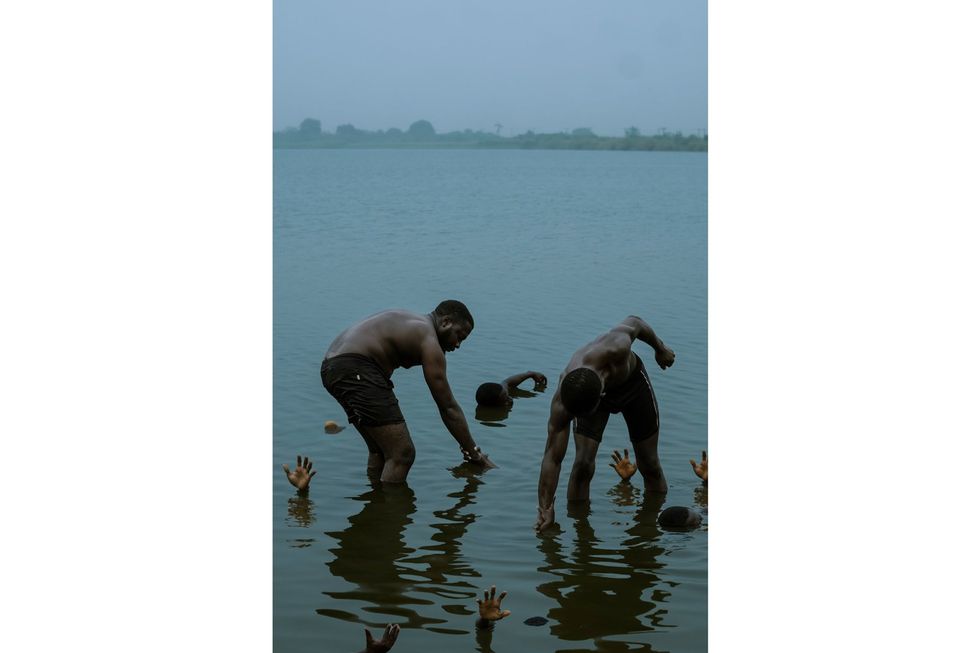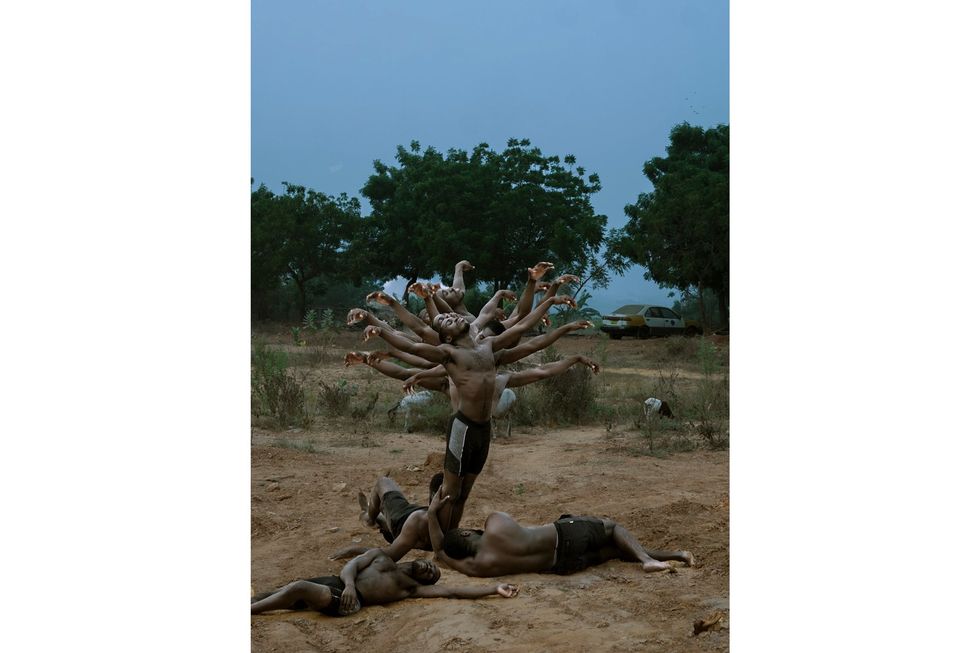Spotlight: Nana Frimpong Captures the Fluidity of African Authenticity
Ghanian photographer Nana Frimpong's surrealist images use the fluidity of water to capture the beauty and complexity of African minds and bodies.

Nana Frimpong poses for a photo.
In our 'Spotlight' series, we highlight the photographers, visual artists, multimedia artists, and more who are producing vibrant, original work.
This month, we spotlight Ghanaian photographer and creative director Nana Frimpong, aka Frizzle Made It.
The Tema-born, Accra-raised self-taught photographer faced financial insecurities and had to drop out of his second year of University in 2013, leading him to discover more of himself and his love of photography through his smartphone.
In his second year of studying architecture, financial insecurities resulted in Frimpong not being able to continue paying for his degree, so he dropped out. The period of isolation led the creative to a journey of deeper self-discovery and a passion for photography, initially sparked through playing around with his smartphone. Honing in on his craft, and the fanciful ways in which it manifests, saw the Tema-born, Accra-raised photographer’s work grow popular among fans of African art online, as he continued to master his editing style and techniques. So much so that, in 2019, the photographer graduated from smartphones to his first professional camera, gifted to him by someone who saw his work online and fell in love with it. A year later, global photography online magazine, LensCulture, honored him as one of their 2020 Exposure Award finalists. Now, the 27-year-old is more confident in his creative artistry and ability to faithfully communicate the complexities of his own mind.
Inspired by human emotions, especially the ones we try so desperately to escape or disregard, Frimpong’s work seeks to convey feelings of sadness, love, addiction, and personal struggles, both through his use of color and the beauty of Black bodies. Through his own journey of conquering his fears, and overcoming their confining limits, the photographer has gained an understanding of how to reproduce and illustrate his feelings, capturing young Black men in various visually emotive poses, against a captivatingly barren landscape.
Much of Frimpong’s work exists in or around water, as the artist says the benevolent but lethal element helps him channel heavier emotions. The fluidity of water and the human body's unconfined nature have supported the photographer's quest to acknowledge and surrender to the flow between his creative thought and action. As an African who was afforded little mental health support, photography has given him the gift of processing his life experiences. He returns it by sharing what he’s uncovered with others. With an Afrocentric vantage point, and inspired by greats like Mexican painter Frida Kahlo and French graphic illustrator Gustave Doré, Frimpong’s raw, unfiltered work speaks to a global audience while staying true to what he knows best – his community, the ways in which they account, and a vast African landscape.
We spoke with the self-proclaimed surrealist photographer about African originality and authenticity, and abandoning fear to go after what you want.
The interview below has been edited and condensed for length and clarity.
OkayAfrica: When did you decide to be an artist?
Nana Frimpong: I have always been an artist. I started drawing when I was young and went on to study architecture. I would say that art is the first thing that I was able to identify myself with when I became conscious of myself and my environment.
What are the central themes in your work?
My central themes are mostly water-related – fluidity. It helps me communicate emotions that language can’t articulate properly.
Where do you seek inspiration and how does it find you?
I seek inspiration from everywhere; personal experiences, and other artists, both dead and alive. But, mostly, my inspirations find me when I am in a meditative state, or, when I quieten my mind.
What do you believe sets African artists apart from the rest of the world?
Originality and authenticity. As African artists, we often bring unique, diverse, and rich blends of traditional elements to our work, which sets us apart globally. We embrace our artistic expression by reflecting a deep connection with our heritage to address social issues and topics. It can never be taken from us.
Can you talk about your use of color?
My choice of color is based on the kind of emotions I want to communicate. I have used several colors but I tend to favor a dark blue theme. It helps me give the art an air of gloom or an intentionally emotional feel.
What’s something you wish someone told you at the beginning of your journey?
To be patient; with myself, and my art. To protect my sanity and not be afraid to explore. Most importantly, to conquer fear.
Image courtesy of Nana Frimpong.
Ghanaian photographer Nana Frimpong’s series of photographs depicting human emotion and Black Beauty.







